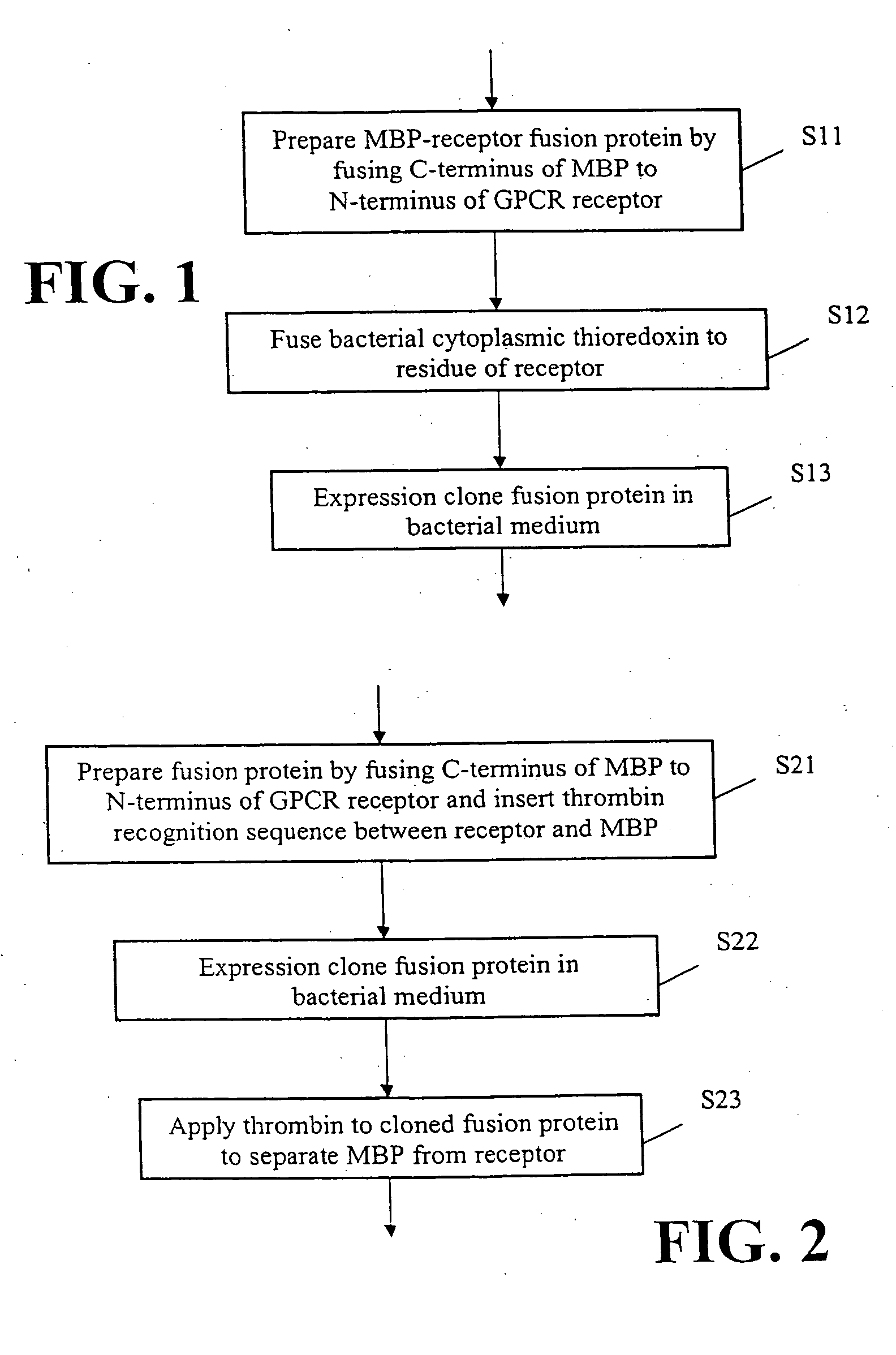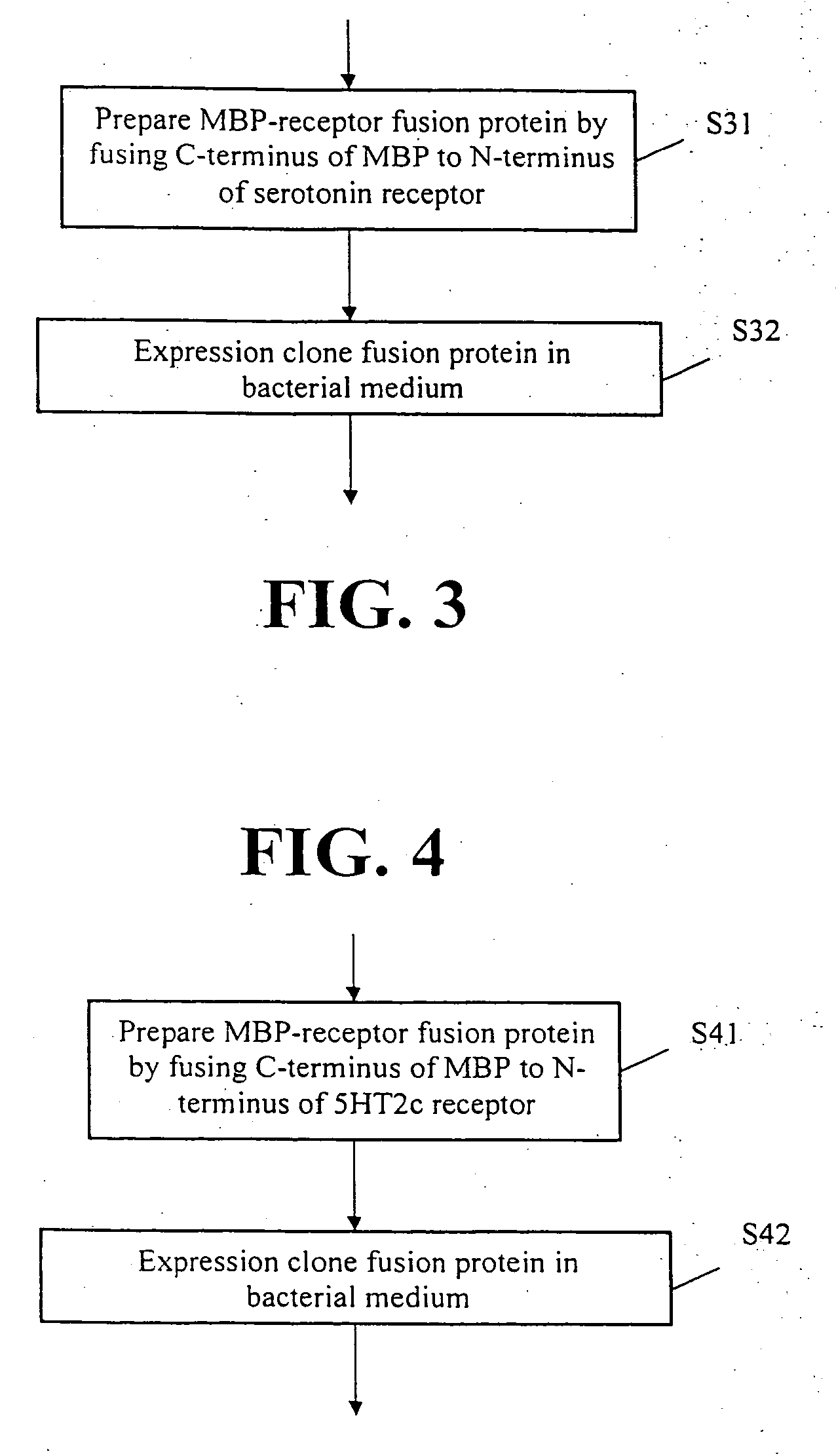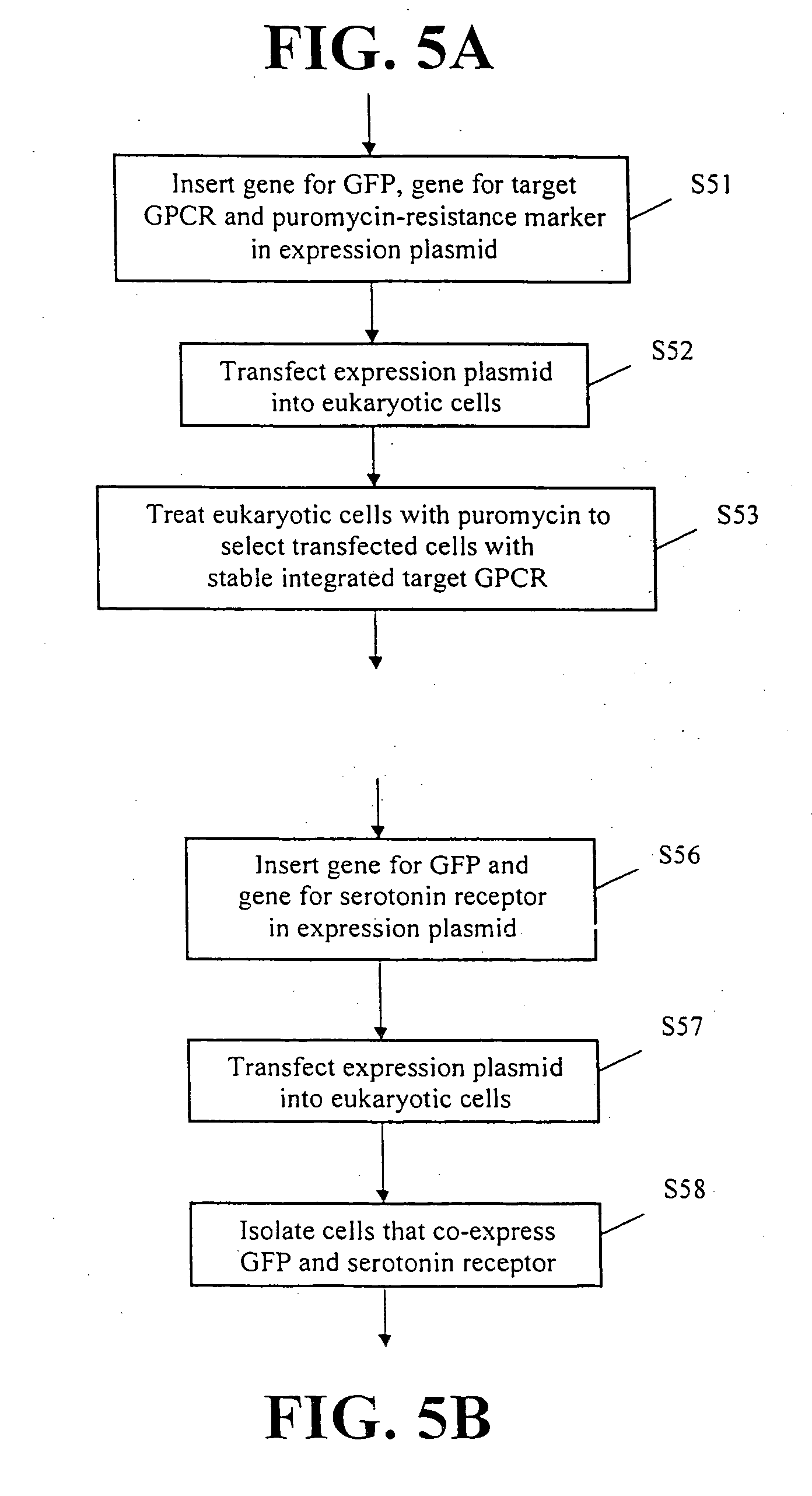Processing for producing and crystallizing G-protein coupled receptors
- Summary
- Abstract
- Description
- Claims
- Application Information
AI Technical Summary
Benefits of technology
Problems solved by technology
Method used
Image
Examples
Embodiment Construction
Definitions
[0082]“Cloud point”, as used in the field of X-ray crystallography, means the precipitant concentration above which a soluble protein in solution becomes insoluble, and below which a soluble protein in solution remains soluble.
[0083]“Eukaryotic cell” means any cell with a true nucleus bounded by a nuclear envelope. Eukaryotic cells include, for example, animal cells (e.g., mammalian cells) and plant cells.
[0084]“Expression” means the cellular production of protein encoded by a particular nucleic acid. Expression includes, for example, transcription of DNA, processing of the resulting mRNA product and its translation into an active protein (see Sambrook et al. 1989).
[0085]“Expression vector” shall mean a nucleic acid encoding a nucleic acid of interest and / or a protein of interest, which nucleic acid, when placed in a cell, permits the expression of the nucleic acid or protein of interest. Expression vectors are well known in the art.
[0086]“Fusion protein” means a pr...
PUM
| Property | Measurement | Unit |
|---|---|---|
| Fraction | aaaaa | aaaaa |
| Fraction | aaaaa | aaaaa |
| Fraction | aaaaa | aaaaa |
Abstract
Description
Claims
Application Information
 Login to View More
Login to View More - R&D
- Intellectual Property
- Life Sciences
- Materials
- Tech Scout
- Unparalleled Data Quality
- Higher Quality Content
- 60% Fewer Hallucinations
Browse by: Latest US Patents, China's latest patents, Technical Efficacy Thesaurus, Application Domain, Technology Topic, Popular Technical Reports.
© 2025 PatSnap. All rights reserved.Legal|Privacy policy|Modern Slavery Act Transparency Statement|Sitemap|About US| Contact US: help@patsnap.com



